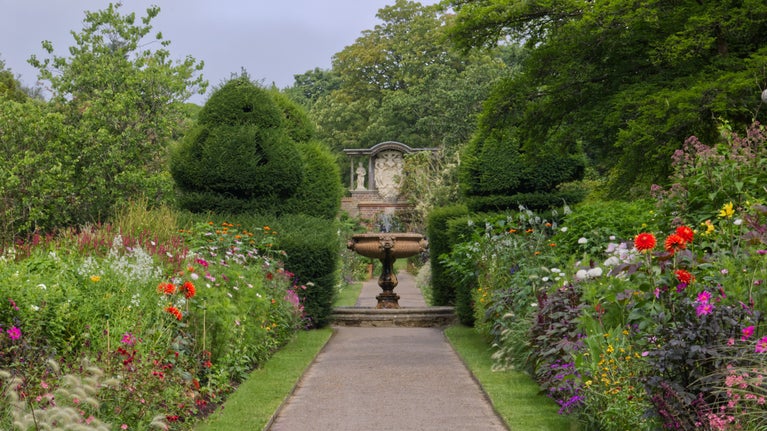
Gardens and landscapes
Find out more about the historical landscapes that the talented garden teams work hard to conserve at the places you love to visit.

A hermitage can be two things: in early Christianity, a hermitage was a place where religious men lived on their own to escape the temptations of the world. But in 18th-century landscape gardens, a hermitage was a retreat for its aristocratic owners to take rest on their walks. The former were caves or small buildings in deserts, mountains, forests or on islands while the latter were predominantly used as architectural feature to draw the eye in the landscape. You can see both types across Britain at the places we care for.
Hermitages were created by religious men (hermits – from erēmos, Greek for wilderness) in the days of early Christianity as a way of escaping the material world, which they believed to be full of temptation. They lived on their own and in very strict self-discipline (asceticism) on the edges of the civilised world.
The movement started in the second or third century AD in the deserts of Syria and Egypt, but spread across Europe in the following centuries.
In Britain, hermits such as St Cuthbert retreated to islands just off the coast. The physical signs of these hermitages are often gone but their memory remains. St Cuthbert lived in a small hut on Inner Farne in Northumberland between 676 and his death in 687 AD, probably on the site of the ‘Fishe’ house.
In other places, a name may be all that’s left, such as at Lansallos in Cornwall, which translates as the chapel of St Salwys.
From around 1730, the hermitage started to appear in English landscape gardens, either as a moody eye-catcher or as a summer house. Designed in 1730 by William Kent (1685–1748), the Hermitage at Stowe in Buckinghamshire is very atmospheric; a reminder that there is more to life than beauty and pleasure.

The idea of hermitages as a form of religious asceticism can feel a long way from hermitages in 18th-century landscape gardens. However, in both cases the underlying idea is the same: they were used to retreat from the world and to contemplate the meaning of life and death, although in the 18th century, this might be done with a cup of tea in hand.
St Cuthbert lived on Inner Farne off the Northumberland coast for ten years in relative isolation. His turf-built hut has long gone, but a medieval chapel, heavily restored in Victorian times, serves as a reminder of the island’s attraction as a spiritual retreat.
Little is known of Herbert of Derwent Water, a 7th-century hermit who lived on an island in the middle of the Cumbrian lake. But Herbert, and the island named after him, were the inspiration for writers as diverse as William Wordsworth and Beatrix Potter.
Recently restored, the 18th-century hermitage at Kedleston Hall sits in a Robert Adam-inspired designed landscape. Rustic on the outside, it was used as a summer house for the family to have a rest and drink tea and it even contained a mahogany tea table.
The hermitage at Stowe was designed by William Kent in 1730, and invited visitors to contemplate a virtuous life and the folly of pursuing pleasure.
During the 1300s, the hermit Nicholas de Legh lived in a cave on the site of present-day South Foreland Lighthouse. Legend has it that he lit a lantern every night to guide ships to safety.

The bear’s hut at Killerton is a timber structure with a beautiful stained-glass window. It was used as a summer house by the family, but also served in the mid-19th century as a home for Tom, a Canadian black bear brought back to Killerton by the twelfth baronet’s brother Gilbert.
The remains of a hermitage were uncovered in the grounds at Belton House during site excavations in 2013. Previously believed to be those of a summer house, they were instead identified as the ‘Hermitage’ designed by architect Anthony Salvin in the early 19th century. The excavated remains match Salvin's design.
Danielle Westerhof is a freelance historian and librarian with a PhD in medieval attitudes towards the dead body who now works as a special collections librarian for the National Trust.

Find out more about the historical landscapes that the talented garden teams work hard to conserve at the places you love to visit.
Dovecotes were built by wealthy and aristocratic families from the Norman period onwards and doves were kept for both food, feathers and as status symbols.

Sunken lanes are roads or tracks that sit below the general level of the surrounding land, often by several metres. They’re formed by the passage of people, vehicles and animals over time.

Learn about the origins of the pilgrimage, a journey that blends the physical and the spiritual into a unified experience.
